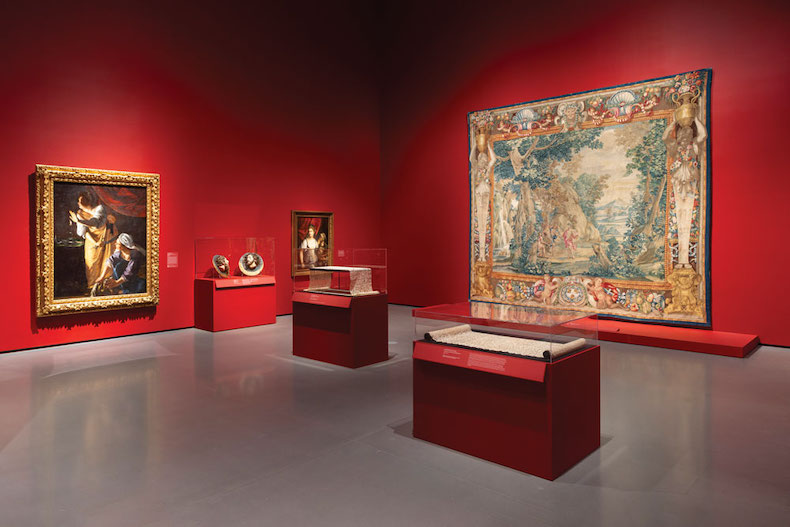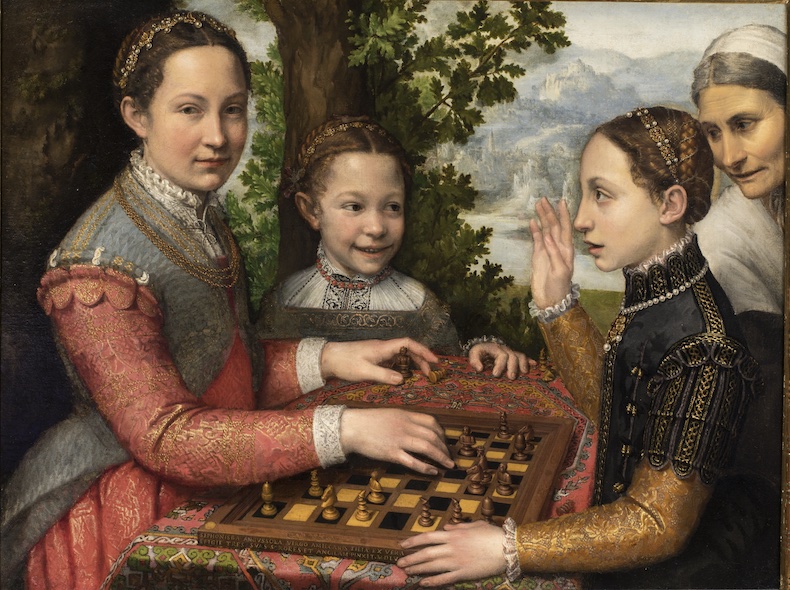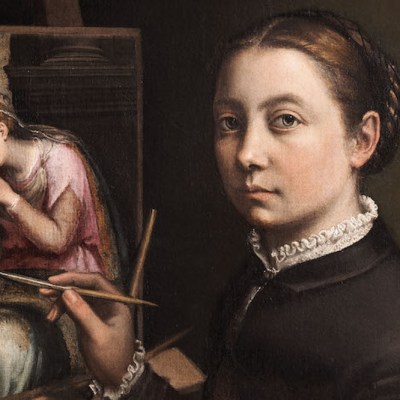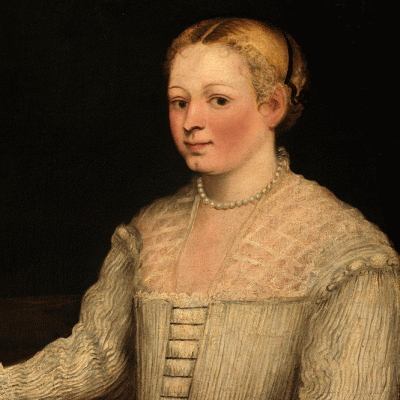From the December 2023 issue of Apollo. Preview and subscribe here.
Among the art-gallery going public, is anyone still unaware that there have always been women artists, even before the 19th century? Perhaps a few still think that women first picked up their paintbrushes around the time they started campaigning for the vote. Certainly, the further back you go, the more surprising it may seem – given the limitations placed on women – that some were nonetheless able to build successful artistic careers. But beginning in earnest with the National Gallery’s blockbuster Artemisia Gentileschi exhibition of 2019, a flurry of shows has put the names of various Renaissance women in lights. Just this year, we have had ‘Lavinia Fontana: Trailblazer, Rule Breaker’ at the National Gallery of Ireland, ‘Mary Beale: Experimental Secrets’ at Dulwich Picture Gallery, ‘Artemisia Gentileschi: coraggio e passione’ at the Palazzo Ducale in Genoa, and ‘Sofonisba Anguissola: Portraitist of the Renaissance’ at the Rijksmuseum Twenthe in Enschede, to name only a few.
For those of us who dare to hope that we might be entering a new era of awareness about women artists in the Renaissance, this profusion of exhibitions raises further questions. Once the objective has been achieved of making the public aware that yes, women have always made art, what should be the next aim? Two current exhibitions in the United States may offer some ways forward, presenting new perspectives on the subject of women and the arts in the pre-modern period: ‘Making Her Mark: A History of Women in Europe, 1400–1800’, at Baltimore Museum of Art (until 7 January) and ‘Strong Women in Renaissance Italy’ at the Museum of Fine Arts, Boston (until 7 January).
Installation view of ‘Making Her Mark: A History of Women Artists in Europe, 1400–1800’ at the Baltimore Museum of Art. Photo: Mitro Hood

As several of the essays in the weighty Baltimore catalogue point out, one problem with the emphasis on headline names in blockbuster exhibitions is that it reinforces the narrative of exceptionality: it was a rare artist who had the opportunity to develop her skill into a lucrative career. As a result, the recovery of ‘lost’ or ‘forgotten’ women artists can, counterintuitively, reinforce wider narratives of the ideal artist as individual heroic genius, and therefore usually male. It also does nothing to break down wider assumptions about what is valuable in an artwork. In ‘Making Her Mark’, the curators Andaleeb Badiee Banta and Alexa Greist set out ‘in search of the unexceptional woman artist’. They do this by turning their attention to the ways women were involved in the visual arts more broadly, as artisans, makers and supervisors. Although a lack of signatures and records can make women’s work difficult to trace, the curators nonetheless marshal an impressive array of objects, with a particular focus on decorative arts such as ceramics, embroidery and scientific drawing.
That women were involved in a variety of trades, in both formal and informal capacities, is increasingly recognised by scholars. In her study of adolescent culture in 16th- and 17th-century England, Ilana Krausman Ben-Amos has demonstrated that in Bristol, for example, women made up around 3.3 per cent of around 1,500 apprentices across all trades. The proportion was lower in London, but much higher – around 10 per cent – in smaller towns such as Southampton. Although many were apprenticed in traditionally ‘female’ trades, such as sewing and domestic service, others found employment as drapers, apothecaries, fishmongers, vintners and mercers. They were also trained in crafts such as joinery, bell-founding, and textile-, leather- and metalworking. Informally, wives and daughters were frequently employed in the workshops of male family members, where they were involved in all aspects of production and supervision. The Baltimore exhibition helps to give visual and material form to such statistics, demonstrating that many traditionally male trades and workshops often involved women at some point.
Where ‘Making Her Mark’ focuses on women as makers, ‘Strong Women in Renaissance Italy’, in Boston, takes stock of all the different ways that women had contact with the arts. In the exhibition space, successive areas are separated by colonnades and niches, designed to mimic the famous trio of Ideal City paintings, all made by unknown hands in the 15th century. By evoking the ideal public spaces of an Italian city, the design reinforces the point that women had influence both within and beyond the home, as makers, writers, composers, patrons, models, designers and users of the arts. One of the first objects we encounter is Sofonisba Anguissola’s entrancing self-portrait of c. 1556, in which she holds up a roundel with a cipher representing her father’s name: a star exhibit by every measure, but one that reminds the viewer how often brilliant women painters emerged from the workshops of male relatives. This represents only one aspect of the exhibition’s broad scope, though: it also covers important women patrons, such as Isabella d’Este, reviews material evidence for female devotional rituals, and pays tribute to unknown women embroiderers, weavers and lacemakers.
Miniature Self-Portrait (c. 1556), Sofonisba Anguissola. Museum of Fine Arts, Boston. Photo: © Museum of Fine Arts, Boston

One segment is devoted to female role models, including figures from the Bible and classical mythology. Plates, paintings and terracotta sculptures depict women such as Judith, who infiltrated a military camp and beheaded her enemy Holofernes, and the Sabine women, who advocated for peace after being abducted by their Roman enemies. Such women were held up as patterns of virtue, whether in the form of courage and dynamism or of peaceability and candour. They represent personae that women could use to frame their own lives. Yet, for many women, the choice of exemplars was not limited by gender, and there are instances of powerful women comparing themselves to legendary men: on her accession, Elizabeth I of England compared herself to Daniel delivered from the lion’s den, and a variety of images and texts represent her in the guise of wise King Solomon, not – as we might expect – the Queen of Sheba, his magnificent female companion.
Both the Boston and the Baltimore exhibitions mix fine art objects such as sculpture and painting with works from the decorative arts, including ceramics, lace and embroidery. In the exhibition displays, exquisite embroideries and woven silk velvets are hung like paintings, looking completely at home among the more traditional oil portraits and historical paintings. In the Baltimore catalogue, this approach is presented as a feminist act – a rejection of the doctrine of ‘wall power’ in gallery settings, which (the curators argue) has favoured masculine genres such as oil painting over feminine beadwork and embroidery. Yet, as visitors to the Victoria and Albert Museum, the Metropolitan Museum of Art or the Rijksmuseum will know, combining fine and decorative arts within the same gallery is now standard practice for displaying works of the Renaissance and early modern periods.
In a museum context, this blended approach can trace its origins to the Fitzwilliam Museum in Cambridge, where a country house-style display was instituted by Michael Jaffé in the 1970s. In more recent times, the approach has received renewed interest thanks to the pioneering British Galleries 1500–1900 at the V&A, completed in 1998. There, objects such as furniture, textiles, ceramics and paintings are shown together in thematic rooms, not separated by genre or material. This decision was grounded in period values, the displays helping to convey the importance of copiousness and variety for viewers at the time. This produces the same overall multi-media gallery experience as found in Boston and Baltimore, but is born of a rationale that prioritises historically accurate interpretation over any contemporary political statement.
Embroidery with the Pietà (16th century). Museum of Fine Arts, Boston. Photo: © Museum of Fine Arts, Boston

Indeed, when it comes to women artists in the Renaissance, a return to period values may offer solutions to several problems. A major issue is quality. It is a truism that women artists were generally denied vital training that was available to their male counterparts – notably anatomical study and life drawing based on the male nude. As the Baltimore curators point out, we now know that some women in fact did have access to nude male models, and could always have used their own bodies for female figures. But the historical facts can help to explain the additional barriers faced by women when it came to working in the privileged genres of history and narrative painting, where their grasp on anatomical proportion and convincing movement is often criticised as inferior.
Yet the problem of how to deal with such discrepancies in quality still haunts the Baltimore catalogue essays. Sofonisba Anguissola’s drawing of A Boy Bitten by a Crayfish (c. 1554) is discussed as a rare example of a work by a woman artist praised by Vasari, rather than on its own terms, as an exquisitely rendered depiction of human emotions. The fraught issue of originality is an extension of this problem. The curators of both shows are almost apologetic about the fact that many women artists copied the works of others. Yet originality was hardly a key requirement for most pre-modern artists, even male ones. The word invention derived from the Latin invenire, which could mean to find, discover or fetch, as well as to invent in the sense familiar to us. Copying other artists was a vital component of training for men and women artists alike, and it was common for all decorative artists to take designs from prints and engravings.
Was ‘mere’ copying specifically associated with women? Perhaps. In an embroidered scene of the Deposition by one unknown woman, now on display in Boston, an image of the Veil of Veronica decorates the upper border. This was the cloth offered to Christ by Saint Veronica on the way to his crucifixion, on which an image of his face was miraculously imprinted. An image ‘made’ by a woman in the broadest sense, the veil suggests a miraculous – but mechanical – process of copying, rather than ingenuity or creative agency. Likewise, on the reverse of a nearby birthing tray, a large image of a healthy male cherub was perhaps intended to ‘shape’ the baby in the mother’s womb through an unconscious process known as ‘maternal impression’, where a foetus was believed to take on the form of things the mother had seen.
A lace pattern book designed by Isabella Parasole (1575–1625), also on display in Boston, is an example of women inventing patterns afresh rather than copying them. Like men, women sometimes copied and sometimes invented. Like men, some women produced breathtakingly beautiful and high-quality works, others less so. There are good historical reasons for some of this, and they are worth exploring. But rather than mentally comparing women to the exceptional men – the Raphaels and Michelangelos – we might do better to see them in the broad sweep of human creativity. There were plenty of ‘unexceptional’ male artists, too. This is something to which the Baltimore exhibition gestures, but there is scope to go further. Women have always made things, and we can do them greatest justice by acknowledging that fact without imposing anachronistic hang-ups on them, revealing the richness and strangeness of the past, and its ability to resist modern concerns as much reinforce them.
The Chess Game (1555), Sofonisba Anguissola. National Museum, Poznan

From the December 2023 issue of Apollo. Preview and subscribe here.


